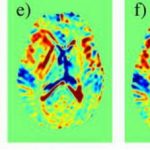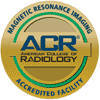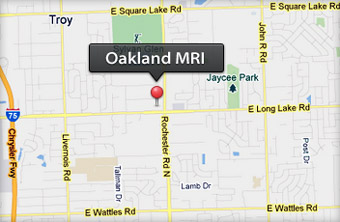 In recent years, there has been some provocative evidence that gadolinium, the most widely used contrast agent for MRI studies has a tendency to accumulate in the brain. This fact has been confirmed by multiple major studies but there is still little direct proof of ill effects. We covered this in an article that looked into a Mayo Clinic study. In the article, we promised to bring you news of future studies on the negative effects of gadolinium, if any. Turns out, there have been some interesting insights regarding these concerns, but what has recently burst onto the scene is a new alternative to gadolinium altogether. Scientists have found a way to take advantage of a unique property of cancerous tumors, and now propose a novel contrast agent, D-glucose, more commonly known as dextrose. With this new contrast, healthcare professionals can potentially circumvent gadolinium for investigating brain tumors.
In recent years, there has been some provocative evidence that gadolinium, the most widely used contrast agent for MRI studies has a tendency to accumulate in the brain. This fact has been confirmed by multiple major studies but there is still little direct proof of ill effects. We covered this in an article that looked into a Mayo Clinic study. In the article, we promised to bring you news of future studies on the negative effects of gadolinium, if any. Turns out, there have been some interesting insights regarding these concerns, but what has recently burst onto the scene is a new alternative to gadolinium altogether. Scientists have found a way to take advantage of a unique property of cancerous tumors, and now propose a novel contrast agent, D-glucose, more commonly known as dextrose. With this new contrast, healthcare professionals can potentially circumvent gadolinium for investigating brain tumors.
Is gadolinium a cause for concern?
Gadolinium-based contrast agents (GBCAs) are FDA-approved and considered safe for use in appropriate cases. However, recent evidence suggests that not only can GBCAs accumulate in neural tissues, but can have certain toxic effects on the body. Because gadolinium is so widely used, there was a strong outcry from patients and medical professionals for a reassessment of the possible side-effects. The FDA subsequently issued a recommendation to radiologists to carefully consider and perform contrast-enhanced studies only when necessary, and test patients for renal dysfunction.
Studies out of the Mayo Clinic and other well-respected research and clinical hubs have shown that gadolinium has a tendency to accumulate in neural and bone tissues, especially for patients who undergo repeated scans. Sugar may be the answer! New evidence shows that glucose-enhanced MRI may potentially be an alternative to gadolinium.
Dynamic Glucose Enhanced (DGE) MRI following infusion of D-glucose enhances brain tumor tissue on left and right (red areas). (d) two minutes post-D-glucose infusion, (e) three minutes post-D-glucose infusion, (f) five minutes post-D-glucose infusion.
To date, the only proven ill effect is the rare disease, nephrogenic systemic fibrosis in patients with renal failure. However, there is now significant in vitro, animal, and human data available that indicates the potential for adverse effects in people who have multiple or recurrent exposures to GBCAs. The results of a patient advocacy group-initiated survey of 17 patients (Gadoliniumtoxicity.com) show the onset of a group of symptoms within a month of their last MRI (Gadolinium Toxicity: A Survey of the Chronic Effects of Retained Gadolinium from Contrast MRIs 2015). These symptoms range from neurological, musculoskeletal, to dermal, including pain (reported by 100 % of patients surveyed), muscle symptoms reported by 88 %, and ocular symptoms (reported by 76 %).
Can a simple sugar replace GBCAs?
So now it’s clear how we gradually came to the conclusion that GBCAs accumulate in neural tissue, bone tissue and may cause negative effects on the human body. This is why researchers put in the effort to come up with something new, something completely safe and biodegradable.
Cancers are notorious for having a sweet tooth, that is, they tend to uptake more sugar than other tissues, so scientists from the National Institute of Biomedical Imaging and Bioengineering (NIBIB) developed a new method using D-glucose (dextrose) to enhance MRI images of brain tumors. They call the new imaging technique Dynamic Glucose-Enhanced MRI (DGE-MRI). Taking this approach, patients who need repeated MRI scans can avoid the possible side effects of GBCAs.
This is the first non-metallic, biodegradable, natural MRI contrast agent tested in humans,” explained Guoying Liu, Ph.D., Director of the NIBIB Program in Magnetic Resonance Imaging and Spectroscopy. “Developing these natural contrast agents is critical for patients who require repeated imaging; additionally it will increase patient acceptance and comfort with imaging procedures.”
A pilot study highlights the efficacy of DGE-MRI
Researchers performed a pilot study to get an idea of how DGE-MRI would compare to GBCAs. They looked at the brains of four normal volunteers and three patients diagnosed with brain tumors. DGE-MRI showed compelling results with extraordinary detail in areas where tumors disrupted the blood-brain barrier (BBB), which is a telltale sign of the highest grade tumors.
Apart from the fact that DGE-MRI is much safer than GBCAs, the metabolism and uptake of glucose make it even better than GBCAs in some cases. Because gadolinium is larger than glucose, it doesn’t get through some of the smaller “holes” in the BBB. Glucose, on the other hand, is small enough to quickly penetrate close to 100% of high grade tumors.
A sweet deal for patients and a new hope for the future
Gadolinium isn’t the ideal contrast agent judging from the studies and reviews we have access to today. It’s by no means going to be phased out any time soon, but searching for an alternative should be one of our priorities. Not only is Dynamic Glucose-Enhanced (DGE) MRI safe, the amount of glucose used for MRI scans is the same as the amount used in diabetes testing. It’s completely metabolized by the body and leaves no trace, unlike gadolinium, and is also considerably cheaper. At a time when health-conscious patients are using the power of the Internet to stay informed on current medical innovations, we as healthcare professionals must strive to keep our patients safe.
https://gdtoxicity.files.wordpress.com/2014/09/gd-symptom-survey.pdf
http://link.springer.com/article/10.1007/s10534-016-9931-7/fulltext.html

